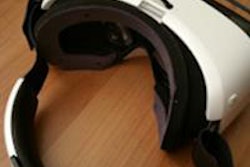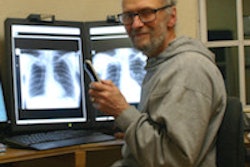
Researchers are reporting on the first small-molecule fluorescent dye for "near-infrared-II" imaging. The dye, which is rapidly excreted by the body, could be used to image tumors in vivo and for image-guided surgery and therapy (Nature Materials, 23 November 2015).
Fluorescence imaging in the near infrared (NIR), near wavelengths of 800 nm, is routinely used in clinical procedures such as assessing vascular flow in grafted tissue during reconstructive surgery and for diagnosing retinal detachment in macular degeneration, to name but two examples. At the moment, there are only two clinically approved NIR fluorophores -- indocyanine green (ICG) and methylene blue, both of which are small molecules that can be rapidly excreted from the body.
These molecules fluoresce in the so-called first NIR window (of 750-900 nm). Although imaging within this region is better than imaging at visible wavelengths, it has recently come to light that even better images can be obtained using fluorophores that fluoresce within the "second" NIR window (of 1,000-1,700 nm).
NIR-II imaging as it is known, allows centimeter-deep tissues to be imaged with micron-scale resolution -- something that is not possible with traditional NIR-I region imaging.
The problem is, however, that most existing NIR-II fluorophores are made from inorganic nanomaterials, such as low-bandgap semiconductors that emit long-wavelength photons. These fluorophores are excreted slowly from the body, raising concerns about long-term toxicity because they are retained in organs like the liver and spleen. To make things worse, these fluorophores must also be encapsulated in a polymer matrix because they are highly hydrophobic, which increases their size even further and makes them too big to be efficiently filtered by the kidneys.
Now, a team of researchers led by Zhen Cheng and Hongjie Dai at Stanford University in the U.S. and Xuechuan Hong at Wuhan University in China has made the first small-molecule NIR-II "donor-acceptor" fluorophores from benzo[1,2-c:4,5-c']bis([1,2,5]thiadiazole), or CH1055, which absorbs light at around 750 nm and fluoresces at around 1,055 nm.
A PEGylated version of the dye has a molecular mass of just 8.9 kDa, which is well within the size limit of 40 kDa for it to be efficiently excreted by the kidneys. Indeed, 90% of injected CH1055-PEG is removed in the urine within 24 hours. This excretion time is similar to that of FDA-approved fluorophores, but, as a bonus, the researchers also found the NIR-II imaging quality with CH1055 is far better than that of ICG for imaging blood and lymphatic vasculatures, tumors and lymph nodes in mice.
"This dye could serve as a platform technology and be used in many applications, including in vivo molecular imaging, image-guided surgery and therapy, in vitro cell labelling, diagnosis, and bioassays," Cheng told medicalphysicsweb sister site nanotechweb.org. "It is the first clinical translatable small molecule NIR-II fluorescent dye that can be used to label a variety of biomolecules for such applications."
Hong adds that he and his colleagues are now busy further optimizing the quantum yield and biocompatibility of their dye so it can be used in real-world clinical imaging.
© IOP Publishing Limited. Republished with permission from nanotechweb.org, a unique global portal for the nanotechnology community.



















